Mario Kart is a series of kart racing games developed and published by Nintendo. Players compete in go-kart races while using various power-up items. It features characters and courses from the Mario series as well as other gaming franchises such as The Legend of Zelda, Animal Crossing, F-Zero, and Splatoon.

Super Mario Kart is a kart racing game developed and published by Nintendo for the Super Nintendo Entertainment System (SNES). The first game in the Mario Kart series, it was released in Japan and North America in 1992, and in Europe the following year in 1993. Selling 8.76 million copies worldwide, the game went on to become the fourth best-selling SNES game of all time. Super Mario Kart was re-released on the Wii's Virtual Console in 2009, on the Wii U's Virtual Console in 2013, and on the New Nintendo 3DS's Virtual Console in 2016. Nintendo re-released Super Mario Kart in 2017 as part of the company's Super NES Classic Edition.

Mario Kart: Super Circuit is a 2001 kart racing game for the Game Boy Advance (GBA). It is the third Mario Kart game and retains its predecessors' gameplay: as a Mario franchise character, the player races opponents around tracks based on locales from the Super Mario platform games. Tracks contain obstacles and power-ups that respectively hamper and aid the player's progress. Super Circuit includes various single-player and multiplayer game modes, including a Grand Prix racing mode and a last man standing battle mode.

Mario Kart 64 is a kart racing video game developed and published by Nintendo for the Nintendo 64. The game is the second main entry in the Mario Kart series and is the successor to Super Mario Kart (1992) for the Super Nintendo Entertainment System. The game was released in Japan on December 14, 1996; in North America on February 10, 1997; and in the United Kingdom on June 24, 1997. It was released for the iQue Player in China in 2003. It was released on the Wii and Wii U Virtual Console in 2007 and 2016, and on the Nintendo Switch Online + Expansion Pack on October 25, 2021.

Mario Kart: Double Dash!! is a 2003 kart racing video game developed and published by Nintendo for the GameCube. This game is the fourth main entry in the Mario Kart series, succeeding Mario Kart: Super Circuit (2001). It is the first game in the series to use 3D polygon graphics for the racers, as opposed to sprites.
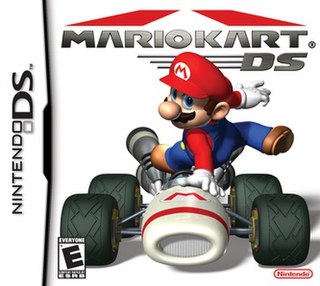
Mario Kart DS is a 2005 kart racing video game developed by Nintendo EAD Group No. 1 and published by Nintendo. It was released for the Nintendo DS handheld game console in November 2005 in North America, Europe, and Australia, and on December 8, 2005, in Japan. The game was re-released for the Wii U's Virtual Console in North America and PAL regions in April 2015 and in Japan in May 2016.
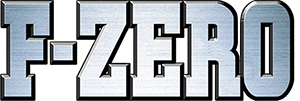
F-Zero is a series of futuristic racing video games originally created by Nintendo EAD with multiple games developed by outside companies. The first game was released for the Super Famicom in Japan in 1990, and along with North America’s Super Nintendo Entertainment System in 1991; its success prompted Nintendo to create multiple sequels on subsequent gaming consoles.
Mario Kart Arcade GP is an arcade sub-series of Nintendo's Mario Kart series, developed and published by Namco and later Bandai Namco Games under license from Nintendo. In all installments, for an additional fee, a player's data can be saved on a magnetic card which can be inserted into the machine again later to retain unlocked items and records. Nintendo had a limited role in development, mainly for quality control purposes. It has a camera to photograph the player's face. The photo can be customized and displayed above the player's character during multiplayer races.

Donkey Kong Barrel Blast is a 2007 racing game for Nintendo's Wii video game console. The game was shown at the E3 convention in May 2006 for the GameCube under the title of DK: Bongo Blast, but this version was ultimately cancelled in favor of a Wii release. It was released for the Wii in Japan and the United States in 2007, and in PAL regions in 2008 with the title Donkey Kong Jet Race.

A Mii is a customizable avatar used on several Nintendo video game consoles and mobile apps. The name Mii is a portmanteau of “Wii” and “me”, referring to them typically being avatars of the players. Miis were first introduced on the Wii console in 2006 and later appeared on the 3DS, Wii U, the Switch, and various apps for smart devices. Miis can be created using different body, facial and clothing features, and can then be used as characters within games on the consoles, either as an avatar of a specific player or in some games portrayed as characters with their own personalities. Miis can be shared and transferred between consoles, either manually or automatically with other users over the internet and local wireless communications.

Myth Makers: Orbs of Doom is a video game for the Wii and PlayStation 2 by UK-based Data Design Interactive. Similar to Super Monkey Ball, it is a part of their Myth Makers franchise, which features cartoon style graphics that is aimed for a family-friendly market. Like many other of Data Design's games, it has met with negative reviews.

Mario Kart Wii is a kart racing game developed and published by Nintendo for the Wii. It is the sixth installment in the Mario Kart series, and was released in April 2008. Like its previous installments, Mario Kart Wii incorporates playable characters from the Mario series, who participate in races on 32 different race tracks using specialized items to hinder opponents or gain advantages. The game features multiple single-player and multiplayer game modes including two to four person split screen. Online multiplayer was supported until the discontinuation of Nintendo Wi-Fi Connection in May 2014. Mario Kart Wii uses the Wii Remote's motion-controls to provide intuitive and conventional steering controls. Each copy of the game was bundled with the Wii Wheel accessory to augment this feature and mimic a steering wheel.

Princess Daisy is a fictional character in the Mario series of video games. She debuted in 1989's Super Mario Land as the ruler of Sarasaland. Described as a tomboy, she used to be rumored to be Luigi's love interest, similarly to Princess Peach being the love interest of Mario, but it is now official after being confirmed by Nintendo. This became the plot of the 1993 live-action film Super Mario Bros., in which Luigi saves Daisy from King Koopa.

Mario is a media franchise, produced and published by the video game company Nintendo, created by Japanese game designer Shigeru Miyamoto and starring the titular Italian plumber Mario. It is primarily a video game franchise, but has extended to other forms of media, including television series, comic books, a 1993 feature film, a 2023 animated film and theme park attractions. The series' first installment was 1983's Mario Bros., although Mario had made his first appearance in 1981's Donkey Kong, and had already been featured in several games of the Donkey Kong and Game & Watch series. The Mario games have been developed by a wide variety of developers including Nintendo, Hudson Soft, and AlphaDream. Mario games have been released almost exclusively for Nintendo's various video game consoles and handhelds, from the third generation onward.

Toad, known in Japan as Kinopio, is a fictional character who primarily appears in Nintendo's Mario franchise. A humanoid with a mushroom-like head, Toad was created by Japanese video game designer Shigeru Miyamoto, and is portrayed as a citizen of the Mushroom Kingdom and is one of Princess Peach's most loyal attendants, constantly working on her behalf. Toad is usually seen as a non-player character who provides assistance to Mario and his friends in most games, but there are times when Toad takes center stage and appears as a protagonist, as seen in Super Mario Bros. 2, Wario's Woods and Super Mario 3D World.

Mario Kart 7 is a kart racing video game developed by Nintendo EAD in cooperation with Retro Studios and published by Nintendo for the Nintendo 3DS in 2011. As with the previous games in the Mario Kart series, players participate in racing on various Mario-themed tracks, playing as one of seventeen different Mario characters. While racing, the players make use of power-up items that either assist their character or hinder opposing characters. New additions to the game include hang-gliding attachments for karts, the ability to drive underwater, the ability to drive in first person, and the ability to fully customize the vehicles' builds. The game supports both local and online multiplayer for up to eight players. The game was a critical and commercial success, with it going on to be the best-selling game on the Nintendo 3DS, with approximately 19 million copies sold worldwide.
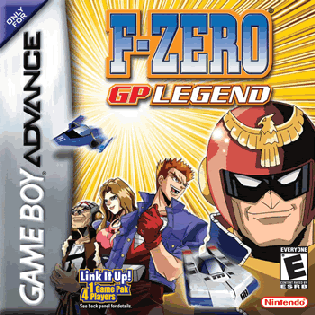
F-Zero: GP Legend is a futuristic racing video game for the Game Boy Advance handheld. Developed by Suzak Inc., it was released in Japan in 2003, and in Europe and North America in 2004.
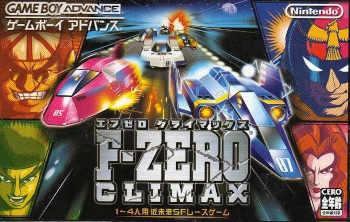
F-Zero Climax is a racing video game developed by Suzak Inc. and published by Nintendo for the Game Boy Advance (GBA) handheld console. The game was released exclusively in Japan on October 21, 2004. The F-Zero franchise went on hiatus after its release.

Mario Kart 8 is a 2014 kart racing game developed and published by Nintendo for the Wii U. It retains the gameplay of previous games in the Mario Kart series, with players controlling a Mario franchise character in races around tracks. Tracks are themed around locales from the Super Mario platform series and are populated with power-ups that help players gain advantages in races. Different difficulties are selectable prior to a race; harder difficulties make gameplay faster. In the new anti-gravity sequences, players drive on walls and ceilings. Mario Kart 8 contains a variety of single-player and local and online multiplayer games modes, including Grand Prix racing and arena-based battle modes.
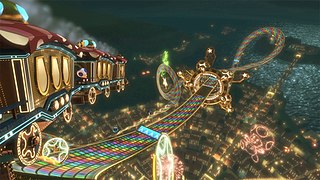
Rainbow Road is a level featured in the Mario Kart kart racing game series, developed and published by Nintendo. Presented as a rainbow-coloured racing course suspended in space, Rainbow Road is widely recognized as one of the most iconic elements of the Mario Kart series.

















